It's true that the winners in history revise it: misleading people about the process of change, H Street revitalization edition
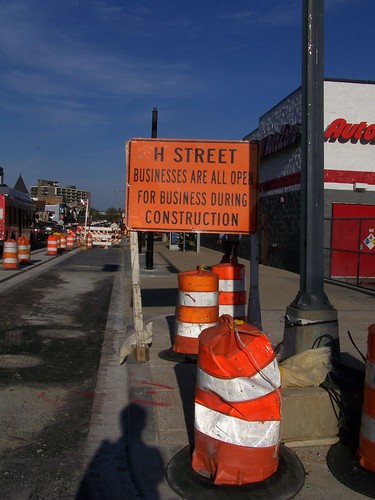
A story on WAMU-Radio, "Rock N Roll Hotel Revitalizes H Street Corridor," attributes the revitalization of H Street NE's commercial district to the opening of the Rock and Roll Hotel. Nothing could be further from the truth and it's a pretty foolish lede for the story of H Street's resurgence. Completely false. From the piece:
The H Street corridor in Northeast D.C. was devastated by the 1968 riots in Washington, and struggled for decades afterward. But the area is in a period of revitalization now -- prompted in part by development around the Rock and Roll Hotel -- which turns five this fall.
As the younger folk say "WTF"?
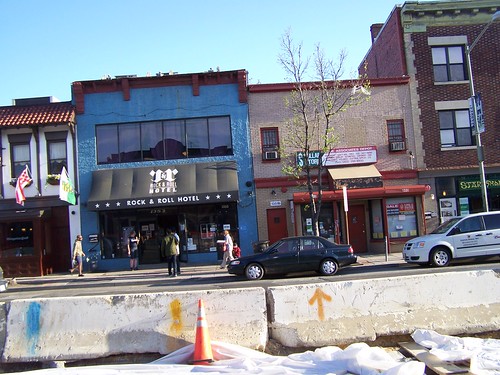
1. Residents from both north and south of H Street come together to oppose the creation of a BP gasoline station proposed to take up 1/2 of the north 300 block, across from the children's museum (2000);
2. This encouraged Councilmember Sharon Ambrose and she got City Council to appropriate money to the Office of Planning to do a revitalization plan for H Street (2002-2004) (plus for a time she convened pro H Street meetings among various stakeholders) and the newly resurgent Office of Planning picked H Street to be the first place to initiate (2001) what they called the Strategic Neighborhood Action Planning process, which was then rolled out across the city;
3. Community attempts to get the Atlas from the H St. CDC (called the Atlas Theater project, around 2000) led to the creation of the H Street Playhouse (2002) by Bruce (may he rest in peace) and Adele Robey, and a different initiative to get the Atlas which ultimately was successful (2002), culminating in the rehabilitation and reopening of the Atlas Performing Arts Center in 2006;
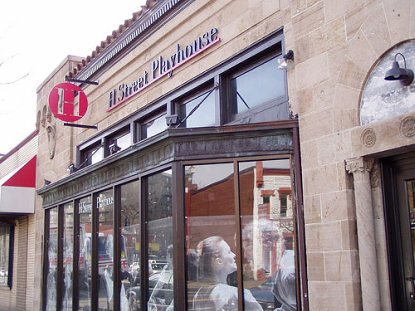
Photo of H Street Playhouse by Elise Bernard.
4. After the gas station issue, residents and merchants continued to work together, and joined to organize the Main Street program focused on commercial district revitalization--the Main Street approach adds the energy of residents and other stakeholders to the profit motives of property owners and merchants, who often lack the skills to do overall planning and marketing of a commercial district as opposed to their own business or property (2001; application and selection in 2002);
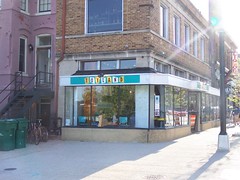
You wouldn't know it now, but this was once one of the worst buildings on H Street, contributing to the degradation of the corridor in many ways. A shooting gallery and flophouse, it is located across the street from the H Street CDC, which wasn't motivated to step in and rehabilitate the building. In 2001 I think or it might have been 2002, David Bernhardt bought the building and refurbished it. After many fits and starts, it is now the Toyland bar.
5. while simultaneously, some individuals were investing in properties on H St. and refurbishing them (e.g., Stuart Bennett, David Bernhardt, Dolores Montgomery, others, including the Robeys and the H St. Playhouse) in substantive ways;
6. And while not attributed as a factor in H Street revitalization very much, I argue that the creation of the New York Avenue Metro Station (agreement reached 2001, opened in 2004), with an entrance at 2nd and M Streets NE, has been incredibly significant to the improvement of H Street as it removed the idea of H Street as a barrier to people with choices looking for a place to live--as a result people with money looking for attractive historic housing stock and subway access started buying houses in the area of the neighborhood north of H Street and south of Florida Avenue + the opening of the Metro meant that all the houses north of H Street and south of Florida became revalued to a minimum of $200,000 each--that's an economic impact just in that particular area of about $350 million.
Plus, it pushed forward the development of the 200 block of K Street (now called the Loree Grand) and the upscale intern housing building on the 1000 block of 3rd Street NE, adding additional residents to the neighborhood. There will likely be at about $1 billion of new development along the east side of the railyard, spurred in part by the opening of this Metro station.
7. And immediately after the finalization of the H Street revitalization plan, DC Department of Transportation immediately followed up with a streetscape and transportation planning process (2003-2004)--which is now almost finished construction.
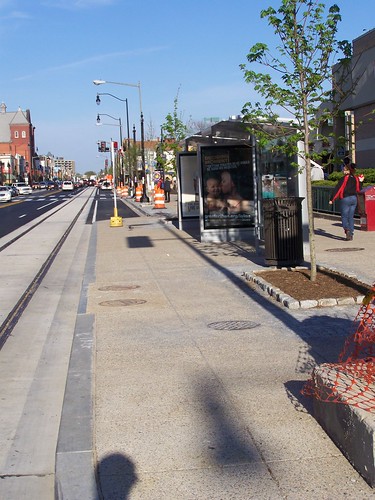
NOTE THAT AS MUCH AS PEOPLE COMPLAIN ABOUT THE CONSTRUCTION NOW, it is almost unprecedented for a plan to be done, designed, engineered, and constructed in about the 9 years it has happened--these projects typically take much more than a decade to be accomplished

Joe Fengler.
8. Joe Fengler, then the chair of ANC6A figured that if as part of the streetscape reconstruction they put in the rails for the streetcar it would increase the likelihood manyfold that the streetcars would eventually run on H Street, and maybe first on H Street before anywhere else so he initiated a full-force lobbying campaign in 2004 to get DDOT to add the installation of streetcar rails to the Streetscape project, to which DDOT agreed in 2006;
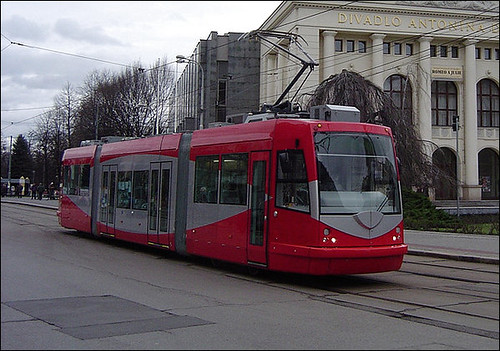
DC streetcar in Ostrava.
9. Abdo Development Company bought Children's Museum and made plans to change it to housing (2004), which was not anticipated in the H St. plan.
10. DC nightlife impresario Joe Englert figured out that H Street could be the next frontier in creating a nightlife district because the buildings were cheap but the commercial district is still close to downtown, so he started investing (2004-2005) plus the Atlas Theater was going to reopening (he christened this area the "Atlas District" which I hate, but then again evening revelers can't be wrong and there are far more of them than there are of me, so I lose, it's now the "Atlas District").
What Joe did is buy the buildings so he can't lose in any case. He has figured out a system for reproducing relatively successful nightlife establishments by bringing together people with concepts, operations experience, capability, and "followings" (a customer base, investors who can provide financing, and a critical mass of buildings--a place--to which people are drawn. While most of the joints that appeal to the nighttime crowd are those that he has a financial interest in, others have come in as well, buying into the idea and furthering the improvement.
Note that many years ago my friend Younes, who is much more hip and stays out later than I am capable of, pointed out that when people go out, they don't go to a specific establishment as much as a place-area-district, because places have multiple establishments and therefore options if where you go first "sucks" for whatever reason that night, you aren't stuck, you can go somewhere else.
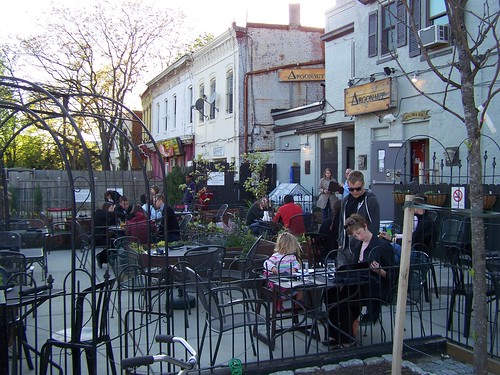
Argonaut restaurant patio. Restaurants are key to revitalization, because people eat every day and they need a place to get sustenance and go to the restroom maybe while they are out and about. Restaurants spur sampling of commercial districts when otherwise people don't have a reason to go there. See "Richard's Rules for Restaurant-Based Revitalization" for more.
Where the WAMU piece hypes the Rock and Roll Hotel, the Argonaut was the first piece of this puzzle. Palace of Wonders was an early place. It didn't succeed. Granville Moores, the mussels and frites place really generated notice, along with, yes, Rock and Roll Hotel and the Pug.
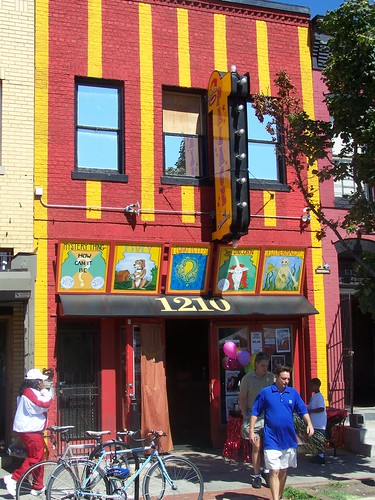
Joe's writing a book about how he's revitalized H Street.

I pissed him off because I described in about 100 words why he is successful. The basic point is that he has created a system for reproducing successful businesses. (Described in the previous paragraph.)
And because he has many establishments (not just on H Street), he has built an understanding and a process for "reproducing" concepts here, including dealing with the permitting, taxation, and building regulations--he has one person on staff who just deals with DCRA, another who just deals with the Office of Tax and Revenue, etc.
Most individual entrepreneurs haven't developed this level of expertise and spend much more time and money in dealing with the government during the process of opening their business, taking longer to open. Plus, because of his track record, he's able to get some vendor financing/sweeteners not normally available to people just starting out.
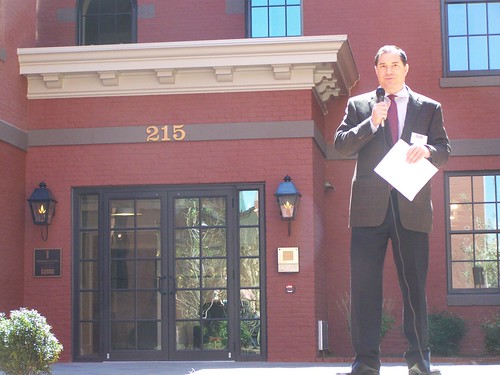
Grand Opening, Landmark Lofts, April 13, 2008. The day the buildings opened, seeing all the people walking up and down the streets around it, made me realize that improvements really could occur, that people with choices would be willing to live in the neighborhood and spend money locally.
11. Abdo's Landmark Lofts and Senate Square Apartments opened in 2008. This added 400+ dwelling units to the corridor, and helped spark other development proposals which furthered interest in the corridor. None of these projects have been constructed as of yet due to the real estate downturn, although some of the projects are back on line, for example, the Stueart Investment project--200+ housing units and a Giant Supermarket on the ground floor on the 300 block north is supposed to break ground this year.
12. The streetcar should start service late next year (but I am betting 2013). This will make H Street NE the first place on the east coast where modern streetcars will be in service, which will lead revitalization on H Street, especially retail redevelopment--most of the new places that have opened thus far are food-nightlife establishments--to the next level.
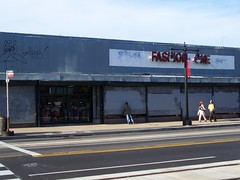
Retail development on H Street (this is the 700 block) still has a ways to go.
There you have it, the overnight success of H Street, all because of the Rock and Roll Hotel.
13. Note that this doesn't mention other ventures over the years to revitalize H Street, starting with the H Street Urban Renewal Plan in the early 1970s--which led to many "improvements" such as Hechinger Mall, various infill housing projects, H Street connection--a parking lot strip shopping center, office buildings on the 600 block, the bridge over the Union Station railyard, etc.
All told hundreds of millions of dollars has been expended on H Street's revitalization over the past 35 years. Most of the Urban Renewal Plan's projects were constructed, yet H Street didn't improve. Or, you could argue as the H Street Community Development Corporation would argue, that they set the stage for the current success.
Revitalization is tough.
It takes a long time.
FWIW, my witnessing of the impact of the New York Avenue Metro Station on neighborhood improvement shifted my focus career-wise, from commercial district revitalization to transportation planning.

In my opinion, transportation investments, when done right, have the greatest return on public investment in terms of neighborhood and center city revitalization.
And note that I am not being completely fair to Joe Englert (and by extension, the Rock and Roll Hotel). I have said that I think his efforts have accelerated improvement on H Street by at least 5 years.
For one, during the construction, his establishments still bring people to the corridor. For another, you need places to go and do things. The Atlas is great, but in and of itself, neither it nor the H St. Playhouse are enough. Govt. investment and anchors like the Atlas and H St. Playhouse are pump primers--the rest comes from the initiative of restaurants, nightlife places, and retailers.
Labels: infrastructure, transit, transit and economic development, transportation planning, urban design/placemaking, urban revitalization



1 Comments:
Thank you again for your flawless service, and I look forward to working with you in the future.
Post a Comment
<< Home